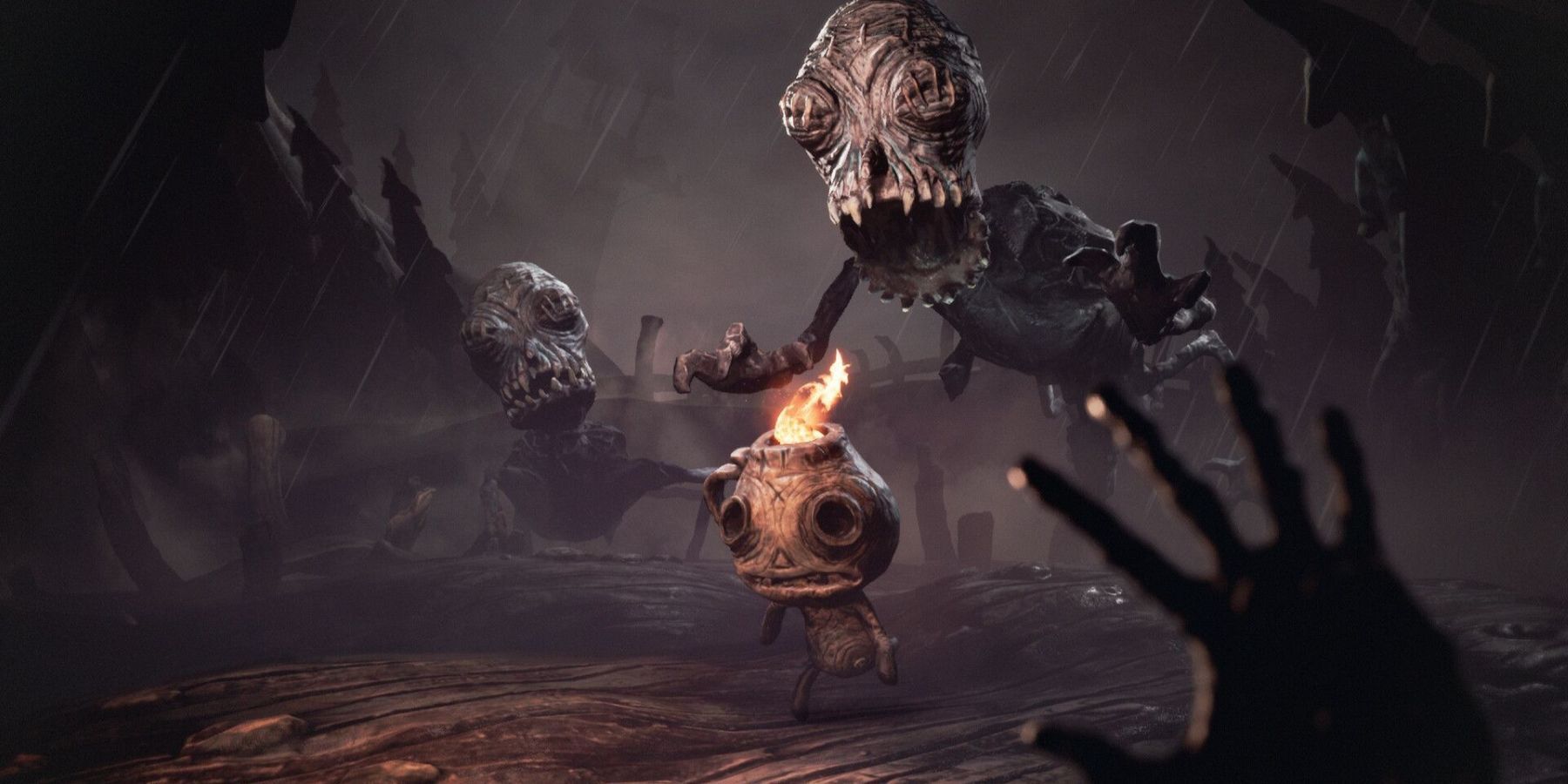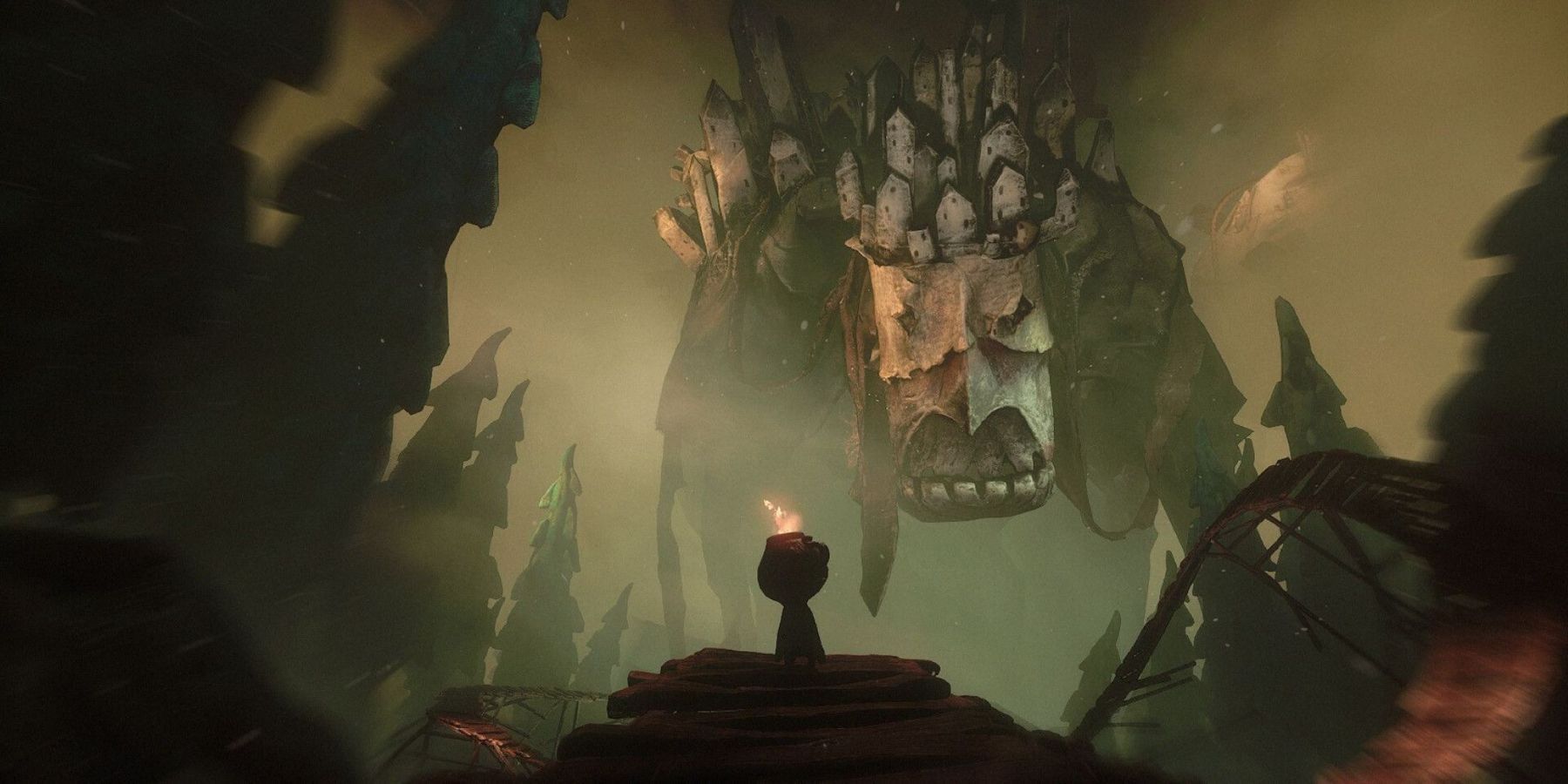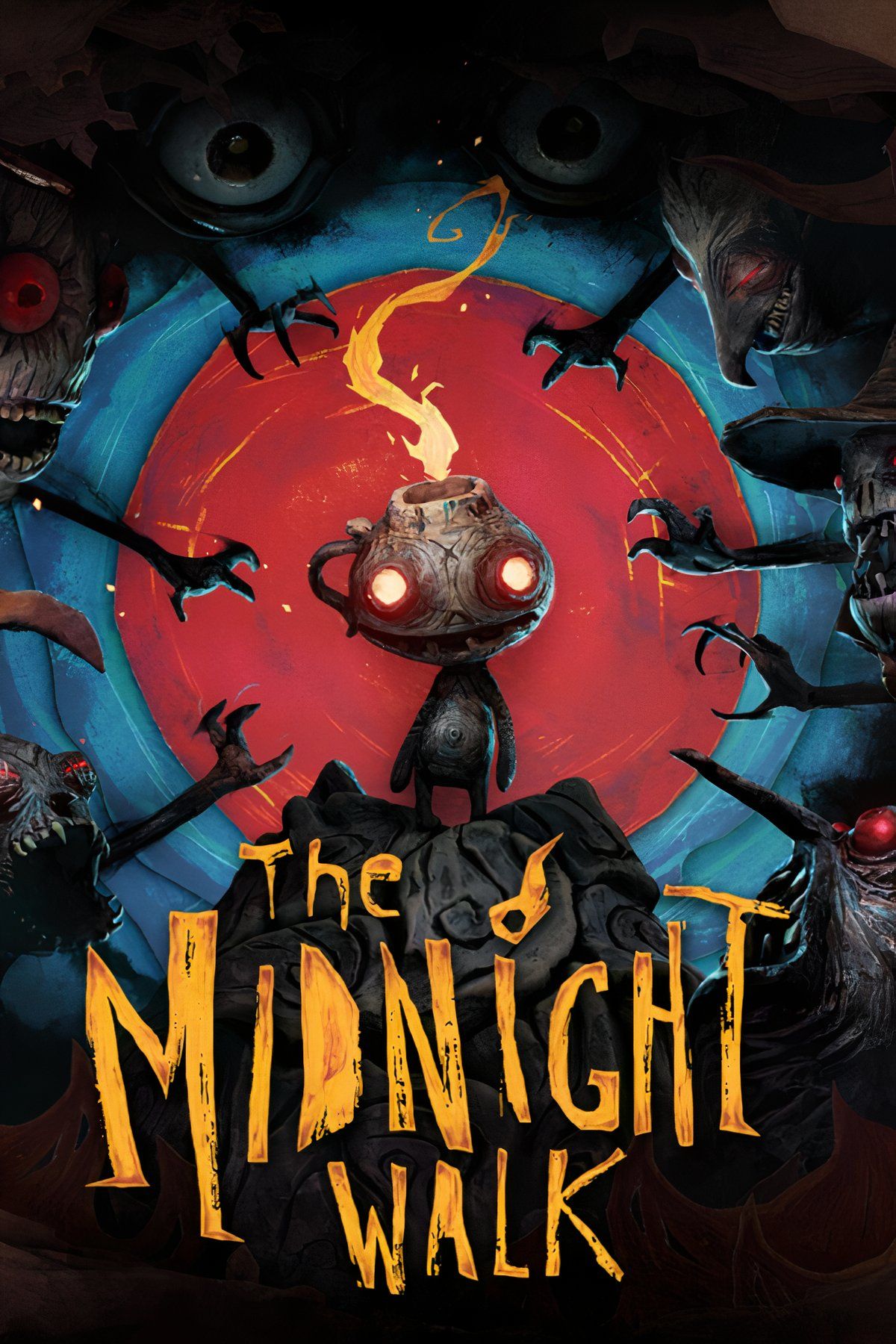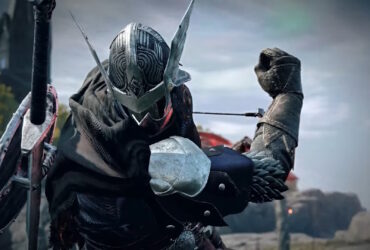The Midnight Walk is an upcoming cozy-horror title that allows gamers to take on the role of The Burnt One as they work with their companion Potboy to bring light and warmth back to a world of darkness. Set to release on May 8, The Midnight Walk seeks to give players a uniquely eerie experience on the PlayStation 5, PSVR2, and PC.
To bring the world to life, the developers created more than 700 unique art pieces and scanned them for use within the game. To learn more about what fans can expect from a modern fairy tale set in a world of darkness, Game Rant sat down with MoonHood Studios co-founders Klaus Lyngeled and Olov Redmalm to discuss The Midnight Walk. The following transcript has been edited for clarity and brevity.
Creating the Roots of The Midnight Walk
Q: Are the fairy tales in The Midnight Walk rooted in specific stories? If so, which ones?
Klaus: Some of them are inspired by a few Nordic writers, such as H.C. Andersen. One of the stories is inspired by The Little Match Girl. It’s mainly something Olov and I came up with. The tales kind of grew out of the theme of light, darkness, and fire.
Olov: When writing the dialogue for the game, there were some instances where I pulled inspiration from ancient texts, poems, or fables. Some of them were Buddhist. Not surprisingly, humans have thought about and written about fire for a very long time, and we all have our own unique associations with it.
Q: What challenges have you potentially faced bringing the game to VR alongside a standard flat-screen format?
Klaus: Since we designed the game from scratch with both versions in mind, the struggle hasn’t been that hard. The eye-tracking feature of the PSVR2 headset really inspired us to make something unique on the flat screen, such as closing your eyes. Initially, I thought that would only be in the VR version, but it turned out to be a fun feature in both formats. We also had to focus more of the gameplay on the player and not use cutscenes as much as we are used to. In VR, it feels great to see everything directly from the player’s point of view.
Q: How many different kinds of matchsticks are there in the game, and can you possibly elaborate on their unique functions?
Olov: Matches are a recurring resource that you’ll use in many different encounters and to solve problems. Regular matches are used to light flammable objects like fireplaces or candles connected to puzzles. Different candles have different effects. Some are timed or tied to certain contraptions and mechanisms, while others need to be hit from far away with your trusty matchlock. Some even require collaboration between you and Potboy. Some monsters are also attracted by fire. Lit candles can become a tool to distract them.
Q: How would you say your experiences working on Flipping Death and Lost in Random influenced The Midnight Walk? What would you say to fans who enjoyed those titles that might be interested in The Midnight Walk?
Klaus: We love working with character design, stories, and voice-overs. A lot of the voice actors we work with are from way back when we developed Stick It to the Man and have worked with us on Flipping Death, Ghost Giant, and Lost in Random. I notice we always like to design gameplay and puzzles around characters. I think it originates from us playing a lot of old-school point-and-click adventure games. Understanding the world and the characters’ needs will help you understand how to progress your adventure. But, of course, The Midnight Walk is much more focused on action-horror than puzzles.
Working with clay or physical objects isn’t that new to us. Stick It to the Man was actually drawn and made to look like it was built on cardboard. Ghost Giant had a similar aesthetic. This was a very natural step for us.
Olov: Some old concepts that we had to cut from Lost in Random, or never got to explore, we got to dig deeper into in The Midnight Walk. Like having a little companion with you, for example. Potboy, in some ways, feels even more alive than Dicey, and we put a lot of effort into making him interact with the environment. Making games fully in clay is also a natural step from doing it digitally in Lost in Random. Once we started working on The Midnight Walk, the 3D scanning technology was good and convenient enough for us to work with!
Mood- and story-wise, The Midnight Walk is a little darker and more “grown up” compared to Lost in Random, and we hope that players of our previous titles will feel like they’ve grown with us.

Related
The Midnight Walk Could Face the Same Issues as South of Midnight
Even though they’re relatively different games, The Midnight Walk and South of Midnight could both suffer from the same problems.
Creating a Tangible World in The Midnight Walk
Q: When did you first create Potboy? I believe you said you began with him.
Olov: Klaus came to me with the first model of Potboy two and a half years ago. Then we started brainstorming a story and a pitch! A little lantern creature with a flame coming from its head was so tantalizing. It begged for interesting gameplay and engaging storytelling. It all kind of created itself from there. We were both looking to reignite our creative spark after a long and exhausting project like Lost in Random, and we did it quite literally with Potboy’s flame.
Q: What were the challenges of creating so many unique pieces to bring the game to life?
Klaus: You would think creating the world in this way would be slow, but it has been fast and a real joy. Maybe it’s fast because it’s fun. The interesting thing about creating real objects is that they come with an unlimited amount of detail. A simple lump of clay can look super-good in Unreal once it’s scanned in. It’s all about the scanning process, which has been quite simple to use.
We want the objects to look rough. So, it’s okay with us when you see that pieces are made out of cardboard or that glue hangs from a model. It’s those details that make it feel like you are trapped in a miniature set. I feel that a lot of newer stop-motion movies get too clean and lose the charm of looking handmade.
As with any game, a big challenge is to have great art direction and make sure everything really fits together. Luckily, we have our Art Director, Victor Becker from Lost in Random, and our star artist, Kenneth Bakkelund, on the team. They have done amazing work!
Q: How did you go about envisioning gameplay with Potboy as an initial inspiration?
Olov: Well, a fire coming from a main character’s head begged for gameplay where one could light things on fire. With that came discussions about the story and what that meant. What is a good amount of fire, what is too much, and is it good or bad? Mostly good, right? The gameplay became about lighting up a dark world and bringing back warmth to its denizens, but there are more elements we haven’t shown yet, and those show a darker side to fire and light.
Q: What’s the name of the band you’re with, and what made you decide to collaborate with them specifically?
Olov: Joel Bille is the composer, and the band is Bortre Rymden. We worked with Joel on Stick It to the Man, Fe, and Ghost Giant. We feel he always brings a very different style to the soundtrack compared to a lot of other titles out there. It’s intimate, tangible, imperfect, and human. Just like our clay sculptures! Just like we’re introducing you intimately to our miniature clay world, the music is intimate and close. It’s like the band is in your room, jamming for you and trying to tell you something.
Q: What role does music play in The Midnight Walk, and how did you achieve what you described as a tangible sound?
Olov: Joel, Klaus, and I talked at length about the spiritual themes of the story, the emotional story beats we are trying to hit, and the characters we want to build. That’s where music plays a huge role. Just as the spark grows, so does the music. We have a theme for fire: its growth, safety, and warmth. There are darker themes that sometimes overlap with the themes of light and safety. They go hand-in-hand and can’t live without each other.
Klaus: I also really love how Joel made the music tangible. The way you can hear these are real instruments. Hearing how a string on a guitar or cello is being pulled. Just like clay art, we wanted the music to feel real and physical.
Q: How have you married the cozy and horror genres, and which cozy elements were most important to you?
Olov: Between the horror elements of the game, we wanted to have restful moments together with not only your friend Potboy, but also other mysterious characters you meet throughout the game. Fire is cozy and not only used in action. To tell a story about warmth, you have to feel it. We hope to achieve this through the play with Potboy, the strange communities you come across, and the breaks by the fireplace with creatures of this world who are only looking for some measure of peace. I’m a late bloomer when it comes to horror, and I know I manage to sit through a movie or horror story if I like the protagonists. There has to be some humor and nuance in there, not just cynical death and destruction. The world of The Midnight Walk is going through a lot, but it is not hopeless.
Q: What made you decide to create Housy as a kind of walking base, and how did you go about giving Housy a personality?
Olov: Klaus can speak to the creation of the model, but I loved the idea of having your home walking next to you like a friend. It’s just a lovely and cozy mood. It’s a comfort. You can feel safe anywhere, no matter how dark it gets, if your home is wherever you walk.
Klaus: I would be lying if I didn’t say that I was inspired by Howl’s Moving Castle, which I guess is inspired by the folktale of Baba Yaga’s Hut. I really love the idea of the characterization of simple objects. Put a pair of legs on something and it makes it alive. I think a lot of people sometimes feel like their objects have a spirit to them. I can do that with my own house or my boat. I believe that I read about Tsukumogami from Japanese folklore, which is the idea that objects get a spirit after a long time of use.
[END]



















Leave a Reply